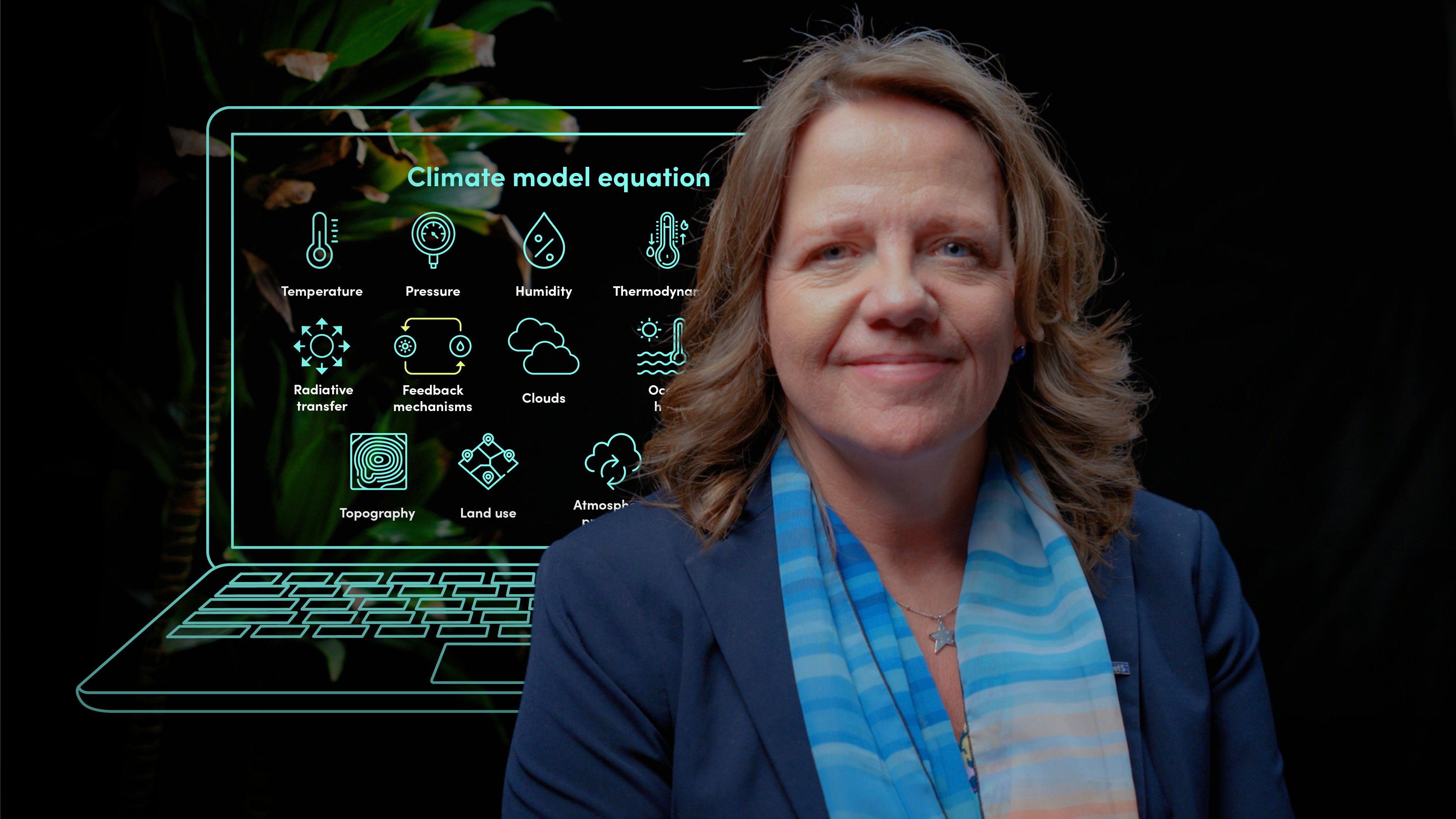
Introduction to Climate Models

Liz Bentley
25 years: Meteorologist
How can we see 5, 10 or 100 years into our future? Join Liz Bentley as she explores climate modelling and projections.
How can we see 5, 10 or 100 years into our future? Join Liz Bentley as she explores climate modelling and projections.

Introduction to Climate Models
12 mins 14 secs
Key learning objectives:
Define the purpose of climate models
Understand difference between climate models and forecasting
Outline the Shared Socioeconomic Pathways (SSPs)
Overview:
Climate models are computer programs that simulate the behaviour of the Earth's climate system. They work by representing the Earth as a set of grid boxes or cells. The models use mathematical equations to simulate how these variables interact with each other over time. They differ from weather forecasting in time scale, spatial scale and input data. From climate models, we have developed Shared Socioeconomic Pathways (or SSPs), which are scenarios used in climate modelling that describe different possible trajectories of global socioeconomic development over the next few decades. SSPs provide a common framework for exploring the relationship between different climate change mitigation and adaptation policies and socioeconomic development.
- SSP1 (also called Sustainability) represents a future with strong emphasis on sustainable development, low population growth, and low fossil fuel use, with an increasing use of renewable energy and improved environmental policies.
- SSP2 (known as Middle of the Road) represents a future with moderate population growth, intermediate economic development, and fossil fuel use continuing as today, with some improvements in efficiency and environmental policies.
- SSP3 (also known as Regional Rivalry) represents a future with slow population growth, slow economic development, and a continuation of existing regional rivalries, with limited international co-operation and investment in clean energy.
- SSP4 (or Inequality) represents a future with high levels of inequality, low population growth, and fossil fuel use continuing at current levels, with limited investment in clean energy.
- SSP5 (also called Fossil-Fuelled Development) represents a future with rapid population growth, high levels of economic development, and continued high use of fossil fuels, with limited investment in clean energy and weak environmental policies.

Liz Bentley
There are no available Videos from "Liz Bentley"





















